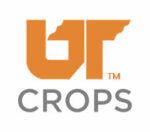LINKS
Bt Cotton
Bt Cotton (W129) – Some content in the linked publication is dated
What is Bt Cotton?
Bt cotton has been genetically modified by the insertion of one or more genes from a common soil bacterium, Bacillus thuringiensis. These genes encode for the production of insecticidal proteins, and thus, genetically transformed plants produce one or more toxins as they grow. The genes that have been inserted into cotton produce toxins that are limited in activity almost exclusively to caterpillar pests (Lepidoptera). However, other strains of Bacillus thuringiensis have genes that encode for toxins with insecticidal activity on some beetles (Coleoptera) and flies (Diptera). Some of these genes are being used to control pests in other crops, such as corn.
What insects does it control?
In 1996, Bollgard cotton (a Trademark of Monsanto) was the first Bt cotton to be marketed in the United States. The original Bollgard cotton produces a toxin called Cry 1Ac which has excellent activity on tobacco budworm and pink bollworm. These two insects are extremely important caterpillar pests of cotton, and both are difficult and expensive to control with traditional insecticides. Consequently, Bt cotton was widely adopted by growers in the western Cotton Belt, for pink bollworm, and in the Midsouth and Southeast, primarily for tobacco budworm. Bollgard toxin also has moderate activity on bollworm, and to a lesser extent on loopers, fall armyworm, and beet armyworm.
Bollgard II was introduced in 2003, representing the next generation of Bt cottons. Bollgard II contains a second gene from the Bt bacteria which encodes the production of Cry 2Ab. WideStrike (a Trademark of Dow AgroSciences) was registered for use in the fall of 2004. Like Bollgard II, WideStrike cotton expresses two Bt toxins (Cry1Ac and Cry1F). Both Bollgard II and WideStrike have better activity on a wider range of caterpillar pests than the original Bollgard technology. The original Bollgard technology and WideStrike are no longer sold in the U.S. The most current Bt cottons, such as Bollgard III, WideStrike 3, and TwinLink Plus, express another Bt toxin, Vip3A, which improves control of several caterpillar pests.
How does Bt cotton affect insect pest management?
Current Bt cotton technologies greatly reduce the need to spray for caterpillar pests. Indeed, in Tennessee, insecticide applications for caterpillar pests are only rarely needed in varieties of Bollgard III, WideStrike 3, or TwinLink Plus cotton. Research and practical experience in the Midsouth and Southeast suggests that some pests are more problematic in Bt cotton because of a reduction in the use of broad-spectrum insecticides for control of tobacco budworm and bollworm. Tarnished plant bug, clouded plant bug and stink bug infestations tend to be more common in Bt cotton. This problem is perhaps more greatly caused by a reduction in insecticide use resulting from boll weevil eradication.
Resistance and resistance management
It seems likely that some cotton pests could develop resistance to Bt crops if they are extensively used, and this has already been documented for some species. For example, bollworm have developed some resistance to the Cry1Ac, Cry1F, and Cry2A Bt toxins. One primary resistance management strategy is having a refuge, either non-Bt cotton or other non-Bt crops or wild hosts that serve as a source of susceptible insects that would potentially breed with any resistant insects generated in Bt cotton fields. The offspring of this mating would be susceptible to Bt toxins (assuming the genetic trait for resistance is at least partially recessive). A second resistance management tactic is the introduction of Bt crops that produce two or more relatively dissimilar toxins. Presumably, it is less likely that any one insect will be simultaneously resistant to more than one toxin. Current Bt cotton varieties express two or three Bt toxins.
Is Bt cotton safe?
Bt toxins are highly specific. The toxins produced by Bt cotton and corn are toxic to a select number of arthropod species. Because cotton is primarily a fiber crop, the contamination of food with toxins from cotton is highly unlikely. However, extensive testing indicates a very low public health risk from the use, including ingestion, of food products from Bt crops.
Negative impacts on non-target arthropods are potential concerns resulting from the use of Bt crops. Concerns were raised because corn pollen, containing Bt toxins, could be blown onto plants which serve as hosts to monarchs, swallowtails, and other butterflies. This is a minor issue with cotton because, unlike corn, it is not wind pollinated. It should also be considered that Bt crops often reduce the use of broad spectrum insecticides, thereby reducing the impacts of these applications on the environment and non-target organisms.







